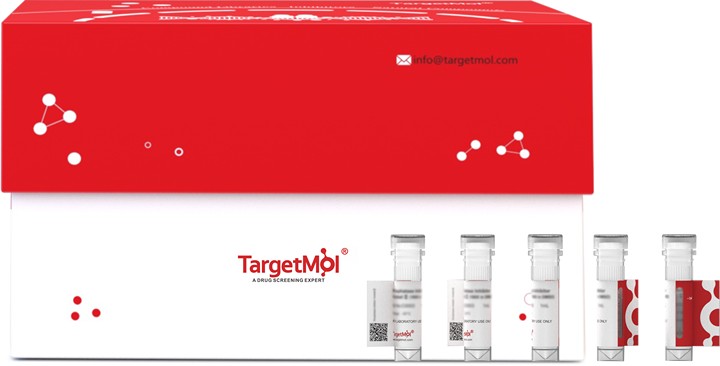Shopping Cart
Remove All Your shopping cart is currently empty
Your shopping cart is currently empty
RORC Protein, Human, Recombinant (His & SUMO) is expressed in E. coli expression system with N-6xHis-SUMO tag. The predicted molecular weight is 74.2 kDa and the accession number is P51449.

| Pack Size | Price | USA Warehouse | Global Warehouse | Quantity |
|---|---|---|---|---|
| 5 μg | $75 | 20 days | 20 days | |
| 10 μg | $119 | 20 days | 20 days | |
| 20 μg | $198 | 20 days | 20 days | |
| 50 μg | $297 | 20 days | 20 days | |
| 100 μg | $427 | 20 days | 20 days | |
| 200 μg | $658 | 20 days | 20 days | |
| 500 μg | $1,170 | 20 days | 20 days | |
| 1 mg | $1,830 | 20 days | 20 days |
| Biological Activity | Activity has not been tested. It is theoretically active, but we cannot guarantee it. If you require protein activity, we recommend choosing the eukaryotic expression version first. |
| Description | RORC Protein, Human, Recombinant (His & SUMO) is expressed in E. coli expression system with N-6xHis-SUMO tag. The predicted molecular weight is 74.2 kDa and the accession number is P51449. |
| Species | Human |
| Expression System | E. coli |
| Tag | N-6xHis-SUMO |
| Accession Number | P51449 |
| Synonyms | RZRG,RORG,RORC,Retinoid-related orphan receptor-gamma,RAR-related orphan receptor C,Nuclear receptor subfamily 1 group F member 3,Nuclear receptor RZR-gamma,Nuclear receptor ROR-gamma,NR1F3 |
| Amino Acid | MDRAPQRQHRASRELLAAKKTHTSQIEVIPCKICGDKSSGIHYGVITCEGCKGFFRRSQRCNAAYSCTRQQNCPIDRTSRNRCQHCRLQKCLALGMSRDAVKFGRMSKKQRDSLHAEVQKQLQQRQQQQQEPVVKTPPAGAQGADTLTYTLGLPDGQLPLGSSPDLPEASACPPGLLKASGSGPSYSNNLAKAGLNGASCHLEYSPERGKAEGRESFYSTGSQLTPDRCGLRFEEHRHPGLGELGQGPDSYGSPSFRSTPEAPYASLTEIEHLVQSVCKSYRETCQLRLEDLLRQRSNIFSREEVTGYQRKSMWEMWERCAHHLTEAIQYVVEFAKRLSGFMELCQNDQIVLLKAGAMEVVLVRMCRAYNADNRTVFFEGKYGGMELFRALGCSELISSIFDFSHSLSALHFSEDEIALYTALVLINAHRPGLQEKRKVEQLQYNLELAFHHHLCKTHRQSILAKLPPKGKLRSLCSQHVERLQIFQHLHPIVVQAAFPPLYKELFSTETESPVGLSK |
| Construction | 1-518 aa |
| Protein Purity | > 90% as determined by SDS-PAGE. |
| Molecular Weight | 74.2 kDa (predicted) |
| Endotoxin | < 1.0 EU/μg of the protein as determined by the LAL method. |
| Formulation | Tris-based buffer, 50% glycerol |
| Reconstitution | A Certificate of Analysis (CoA) containing reconstitution instructions is included with the products. Please refer to the CoA for detailed information. |
| Stability & Storage | Lyophilized powders can be stably stored for over 12 months, while liquid products can be stored for 6-12 months at -80°C. For reconstituted protein solutions, the solution can be stored at -20°C to -80°C for at least 3 months. Please avoid multiple freeze-thaw cycles and store products in aliquots. |
| Shipping | In general, Lyophilized powders are shipping with blue ice. Solutions are shipping with dry ice. |
| Research Background | Nuclear receptor that binds DNA as a monomer to ROR response elements (RORE) containing a single core motif half-site 5'-AGGTCA-3' preceded by a short A-T-rich sequence. Key regulator of cellular differentiation, immunity, peripheral circadian rhythm as well as lipid, steroid, xenobiotics and glucose metabolism. Considered to have intrinsic transcriptional activity, have some natural ligands like oxysterols that act as agonists (25-hydroxycholesterol) or inverse agonists (7-oxygenated sterols), enhancing or repressing the transcriptional activity, respectively. Recruits distinct combinations of cofactors to target gene regulatory regions to modulate their transcriptional expression, depending on the tissue, time and promoter contexts. Regulates the circadian expression of clock genes such as CRY1, ARNTL/BMAL1 and NR1D1 in peripheral tissues and in a tissue-selective manner. Competes with NR1D1 for binding to their shared DNA response element on some clock genes such as ARNTL/BMAL1, CRY1 and NR1D1 itself, resulting in NR1D1-mediated repression or RORC-mediated activation of the expression, leading to the circadian pattern of clock genes expression. Therefore influences the period length and stability of the clock. Involved in the regulation of the rhythmic expression of genes involved in glucose and lipid metabolism, including PLIN2 and AVPR1A. Negative regulator of adipocyte differentiation through the regulation of early phase genes expression, such as MMP3. Controls adipogenesis as well as adipocyte size and modulates insulin sensitivity in obesity. In liver, has specific and redundant functions with RORA as positive or negative modulator of expression of genes encoding phase I and Phase II proteins involved in the metabolism of lipids, steroids and xenobiotics, such as SULT1E1. Also plays also a role in the regulation of hepatocyte glucose metabolism through the regulation of G6PC1 and PCK1. Regulates the rhythmic expression of PROX1 and promotes its nuclear localization. Plays an indispensable role in the induction of IFN-gamma dependent anti-mycobacterial systemic immunity.; Essential for thymopoiesis and the development of several secondary lymphoid tissues, including lymph nodes and Peyer's patches. Required for the generation of LTi (lymphoid tissue inducer) cells. Regulates thymocyte survival through DNA-binding on ROREs of target gene promoter regions and recruitment of coactivaros via the AF-2. Also plays a key role, downstream of IL6 and TGFB and synergistically with RORA, for lineage specification of uncommitted CD4(+) T-helper (T(H)) cells into T(H)17 cells, antagonizing the T(H)1 program. Probably regulates IL17 and IL17F expression on T(H) by binding to the essential enhancer conserved non-coding sequence 2 (CNS2) in the IL17-IL17F locus. May also play a role in the pre-TCR activation cascade leading to the maturation of alpha/beta T-cells and may participate in the regulation of DNA accessibility in the TCR-J(alpha) locus. |
| Size | Quantity | Unit Price | Amount | Operation |
|---|

Copyright © 2015-2026 TargetMol Chemicals Inc. All Rights Reserved.